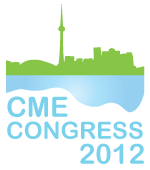Carl Kraus (medscape, LLC); Alan Baldwin (Medscape, LLC); Cyndi Grimes (Medscape, LLC); Ronald Viggiani (Medscape, LLC); Spencer Reese (Medscape, LLC); Pearce SF
Purpose
The United States Food and Drug Administration (FDA) can require drug manufacturers to communicate specific safety concerns to healthcare professionals (HCPs) under title IX of the Food and Drug Administration Amendments Act (FDAAA) known as REMS (Risk Evaluation and Mitigation Strategies). Metrics are historically limited to logistics (such as open rates). Medscape supported an FDArequired alert via email communication (Safe Use Alert, SUA) and developed a CME program to assess measures other than logistics to inform stakeholders on the impact of these communications.
Methods
177,727 HCPs were targeted for the SUA regarding a specific medication as required by an FDA REMS. A CME activity was simultaneously posted that included greater context on the REMS in clinical practice. Assessment included the logistics as well as learning.
Results
20,611 (11.6%) received and opened the SUA whereas 157,116 received but didn’t open the SUA (88.4%). 19,839 (13%) of the non-openers did however participated in the CME activity. There was a 3% overlap of the groups. The volume of correct answers increased 87% among those CME participants answering both pretest and posttest questions.
Conclusions
The lack of group overlap demonstrates that there was an approximate 2-fold increase in the number of HCPs that were alerted to the REMS communication with the CME activity. DHCP letters focus on toxicity concerns and limit the ability for clinicians to develop a balanced benefit/risk profile. CME is an important method to better represent safety concerns, characterizing potential educational gaps as well as successes of REMS implementation.





